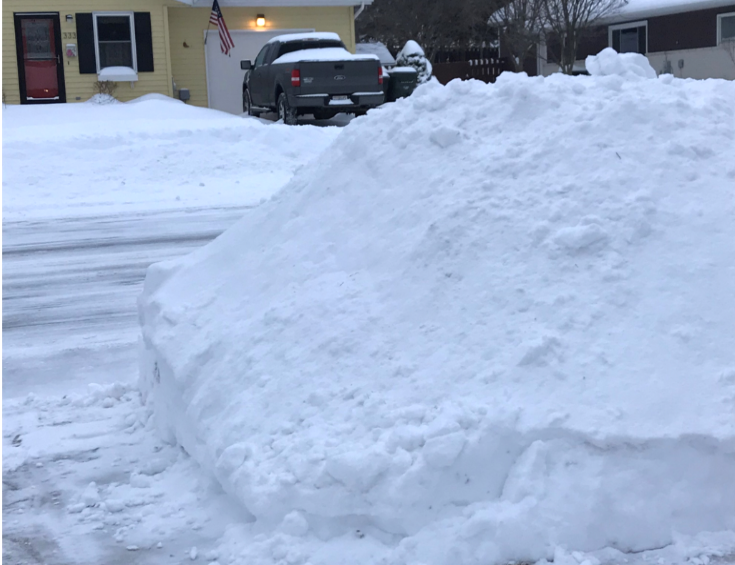Lessons about Hard Decisions from this Week’s School Closings
Our region and many around the country was blasted this week with snow and -50-degree windchills. As usual, the school districts in the region faced a tough decision, do we close school or keep it open? The usual social media boards were full of opinions and judgments about the decisions made by school officials. This week we’ll focus on lessons about making hard decisions, like the ones impacting us this week.
As the common expression says, “You’re damned if you do, damned if you don’t.” For school administrators this week, they lived this damming effect based on announcements to close school because of the 5-7 inches of snow hitting our region, and a decision to not close school the next day with –34-degree windchill.
While we can logically explore why these decisions were made, many of us lose perspective in our gut reactions to decisions that we don’t make, but which impact us.
For example, our school administrators closed school Monday, even though we only got 5 inches of snow.
Many folks complained that it wasn’t enough snow to cancel and their gut reactions were to be upset about school being canceled for many folks, but not work, leaving parents to scramble for childcare. I get it. It’s a tough spot. What can we do when we are in these situations?
Look at it from the decision maker’s perspective
The first thing we can do in these situations is: look at it from the decision maker’s perspective.
- Why might they make the decision they did?
- What are their logical reasons?
- Who do you think they consulted in their decision making?
- Do you think they made this decision without informed information or without talking to other people?
If I look at my responses to the questions above, I start to realize the administrators took into consideration the idea that we only had five inches of snow, but the snow on sidewalks that kids need to walk on were also 5-7 inches deep. The snow at the end of driveways was waist-deep after the plow went through. Kids in rural areas face drifting snow and hard to travel roads.
Our school administrators discuss the decision with other school districts, with the bus drivers who do a route at 4:30 a.m. to assess the safety of the road, and they talk to meteorologists who share what is yet to come in the storm. The decision wasn’t made without information or lightly.
When school didn’t close the next day for -34-degree windchill, people were upset. When I applied the same questions to the next day, I realized that missing four days of school in a row would result in makeup days at the end of the year. And our administrator was working to think from all angles on what would best serve our families in the long run. (BTW – our policy is to cancel with -35-degree windchill, so technically we were following policy).
The second step happens as I look at things logically, I can then remember to do what I should have done from the start:
Assume the best
When I assume the best, I realize most people don’t wake up with the idea that they are going to totally mess up my life on purpose. Most folks are thinking about their decisions and how they impact others. When I assume the best, I can ask questions like:
- What is it this person wants for me?
- Are they blatantly working to mess up my life or do I think they probably want what’s best for me and for those around me?
Now by looking from the administrator’s perspective and assuming the best, I’m not saying there aren’t other legitimate perspectives. For example, it’s dangerous for teachers to commute or for students to wait outside for buses. Those perspectives are legitimate, and it leads us to the next thing we can do in these situations.
We can take control of our own decisions and act on our own convictions.
Whether it’s a decision about school closing or a reorganization at work or a leader’s decision for the company’s direction, you have the power to make a decision that’s different than those who made the decision you disagree with.
In our school example, it’s the parent’s prerogative to determine what’s best for their children’s safety. If keeping them home is what’s safe, do so. When a reorganization leads you to a job you don’t love, look elsewhere. Seeing a leader taking the organization in a direction you disagree with? Find an organization with a different direction, you can buy into.
So often we complain about the things that happen to us, but we have forgotten there may be logical reasoning we don’t know about, we assume the worst, and we let others take our ability to make decisions away.
None of those things have to happen. Instead, we can look from the other person’s perspective, we can assume the best and we can take control and act according to what we believe.
This week as we work to stay warm and safe, we would all do well to remember we have work to do before we make assumptions about the decisions happening all around us. By starting there, we can more deeply appreciate the difficult decisions being made all around us.
Keynote speaker, trainer, and consultant, Sarah Gibson, helps organizations leverage the power of communication, teamwork, and diversity to improve engagement and transform teams. To buy her book or inquire about her speaking programs, please visit www.sarahjgibson.com.



